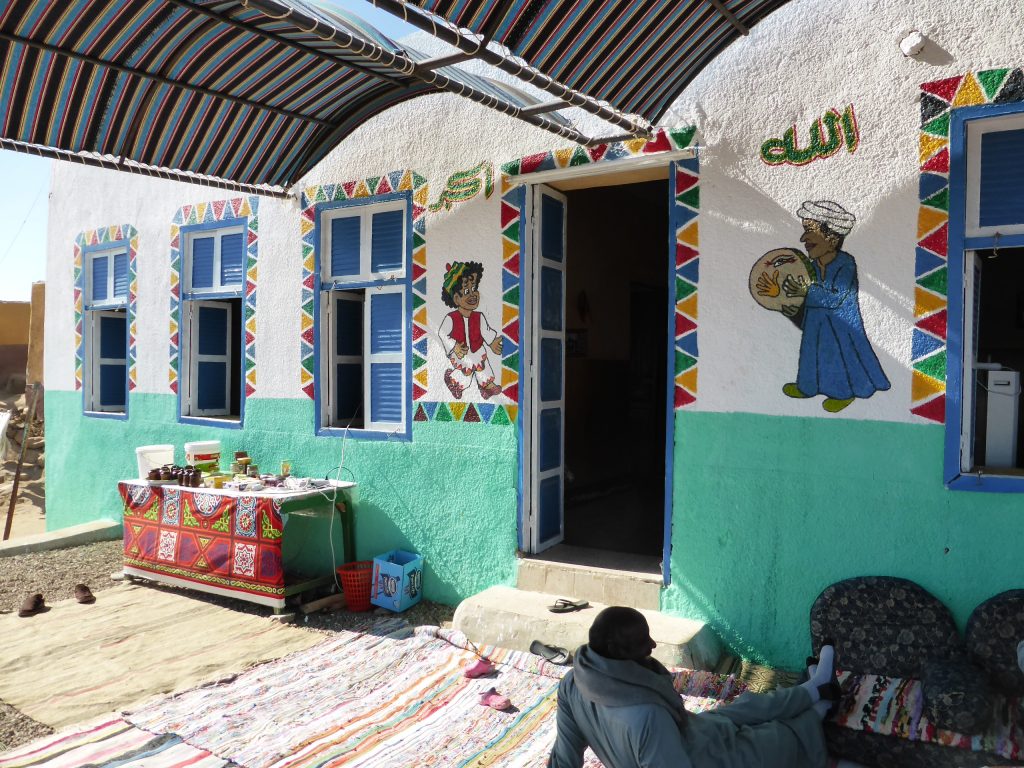New Nubia Resettlement
Lower Nubia, the area lying between Aswan and the Second Cataract has traditionally been known as Egyptian Nubia, Sudanese New Nubia Resettlement.
When the High Dam was built in the 19605, the whole of Lower Nubia was inundated, and its entire population was resettled: fifty thousand to Qasr al-Girba in northern Sudan and an equal number to Kom Ombo. The people of Nubia have been pawns to technology.
New Nubia Resettlement
’I‘hey first became victims of forces beyond their control when the Aswan Dam was being built and subsequently heightened; on three occasions they were obliged to move their settlements to higher ground as their land became progressively inundated.
When they learned that the whole of their country would be lost once the High Dam at Aswan was completed and that they would be transported elsewhere to start a~ new life, far from their ancestral homes, they found it extremely difficult to accept.
New Nubia Resettlement
Nevertheless, in the spring of 1964 the last of the fifty thousand Egyptian Nubians were transported from various sites in the southern part of Lower Nubia and resettled in Kom Ombo. The loss of Nubia was one of the world’s great tragedies, not only because it uprooted an entire population, but also because Nubia was one of the few places remaining on earth unspoiled by humanity.
It was a harsh and barren land, to be sure, but it was one to which the people had a strong attachment.
There is no clear indication of the origins of present-day Nubians.
There are linguistic differences among the various people who were resettled at Kom Ombo. The dialect among the Kenuz, for example, who formed the bulk of the resettled population, was understood neither by their Nubian neighbors to the north nor by the Arabic-speaking group to the south.
Moreover, bordering on the southern extremity of the Arabic-speaking Nubians nearer to Sudan were the Fedija tribe, who spoke the Mahasi dialect of Nubian.
Among the theories that have been advanced is that the Kenuz were ethnically linked with the Nobodai tribe, and that the more aggressive Fedija were the Blemmys, who originally hailed from the Eastern Desert and who moved into Lower Nubia during the second century A.D., when they put pressure on the Roman garrison then controlling the Aswan cataract region.
These ethnic and linguistic differences had to be taken into consideration when the Nubians were resettled.
The land earmarked for them, New Nubia, is a broad, crescent-shaped area of newly reclaimed land on the eastern side of the Nile Valley.
It is about sixty kilometers long and an average of three kilometers wide, with the midpoint lying some thirteen kilometers east of the city of Kom Ombo and the Nile.
The land covers 28,000 acres, irrigated from the reservoir of the High Dam.
The administrative center of Nasr serves forty-three villages, and the community services include health care, schools, and training in agricultural techniques, as well as social activities.
Perhaps the greatest asset to life in New Nubia is the more congenial social and family life; men no longer have to travel to Lower Egypt for work opportunities, the children grow up in a healthier environment, and the women now live in closer proximity and have social intercourse that they never had before.
More importantly, provisions were made for the for male education of the young.
While some local traditions, especially those involving family, remain strong, others are rapidly vanishing.
This is particularly the case with art, architecture, and the crafts. Nubians, who since the seventeenth century have traditionally migrated to Egypt for work, are no longer merely with their age-old professions as servants, cooks, and guards at archaeological sites.
Some have taken their place in society as teachers, doctors, lawyers, and other professionals. Among the older generation, however, were Nubians who never really settled down and who pined to return to their
native land.
As far back as 1973
a group banded into the first cooperative, later to be followed by others, and a migration started.
People who have lost their homes to technological development around the world rarely have the opportunity to return and start anew, but Nubia is a rare exception. It has been
possible because time has shown unexpected fluctuations of the water level on Lake Nasser, resulting in the hope of permanent settlements.
Early in 1984, Nubians
started lobbying in Cairo to return there officially, and the Egyptian parliament eventually agreed.
The High Dam Lake Development Authority began pioneer projects to establish fishing villages and develop agriculture atvarious sites.
Studies indicate thatthere is still a long way to go before the communities around Abu Simbel, ii/adi Alaqi, Qustul, Adindan, and Toshki are self-supporting, out a start has been made and Nubia is springing to life once again. Meanwhile in New Nubia,_the ris


